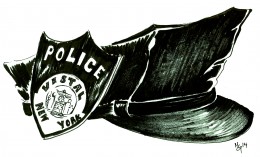
The Division of Criminal Justice Services and the U.S. Census Bureau recently published findings that of the 62 counties in New York state, zero police departments correspond to the racial demographics of their respective regions. Broome County was ranked as one of the worst in terms of correlation between the racial makeup of the population and that of the police force itself. In the Binghamton Police Department, only four of the 127 (around 3 percent) employed officers self-identify as non-white while 22 percent of the population identifies as such. In the Town of Vestal Police Department, zero of 33 officers identified themselves as non-white, while minorities make up 16 percent of that population. Those numbers are troubling.
Vestal’s police chief, John Butler, was asked about the lack of diversity, and he responded by stating that officers are selected based on their performance on the police exam. If a black candidate scores in the top three, then he or she could be hired based on merit, essentially blaming the test for the lack of diversity. We believe that this answer only scratches the surface of a much larger problem of poor representation of minorities in leadership positions. It’s a cop-out, really.
This summer, the shooting of Michael Brown in Ferguson, Mo. alarmed the nation. The gross disparity of minority representation in the local police force and in government positions is frequently cited as one of the main causes of that city’s racial tension. The announcement of Broome County’s statistics reveals that this problem is not confined to the South or the distant regions of the United States. That same lack of representation is present within our own community, and in light of the Ferguson tragedy, refusing to examine the roots of this problem and refusing to acknowledge that it may be the result of some deeper issues could lead to destructive consequences.
Rather than taking the stance that if minority citizens perform better on police examination tests, there will be less inequality, we ought to seek out the underlying cause of the performance gap. Perhaps the candidates do not receive the same level of education or do not have access to the same resources, which places them at an obvious disadvantage. Whatever the problem may be, it is systemic, and the solution requires us to look critically at this test. The benefits of a merit-based test are clear, and we should hold the individuals hired accountable in keeping us safe. But the civil service examination standards leave little room for racial equality when hiring officers.
Community members should feel comfortable with and reflected by those hired to protect them. Hiring minority officers, even if they do not perform in the top three, could significantly aid police-community relations by better representing and better integrating a significant population of the community. Being able to trust and identify with local police officers should not be a privilege.
We’re not asking that non-white applicants be given a freebie and we’re not asking for under-qualified cops. We’re asking that minorities be given a better opportunity to excel as police officers.


